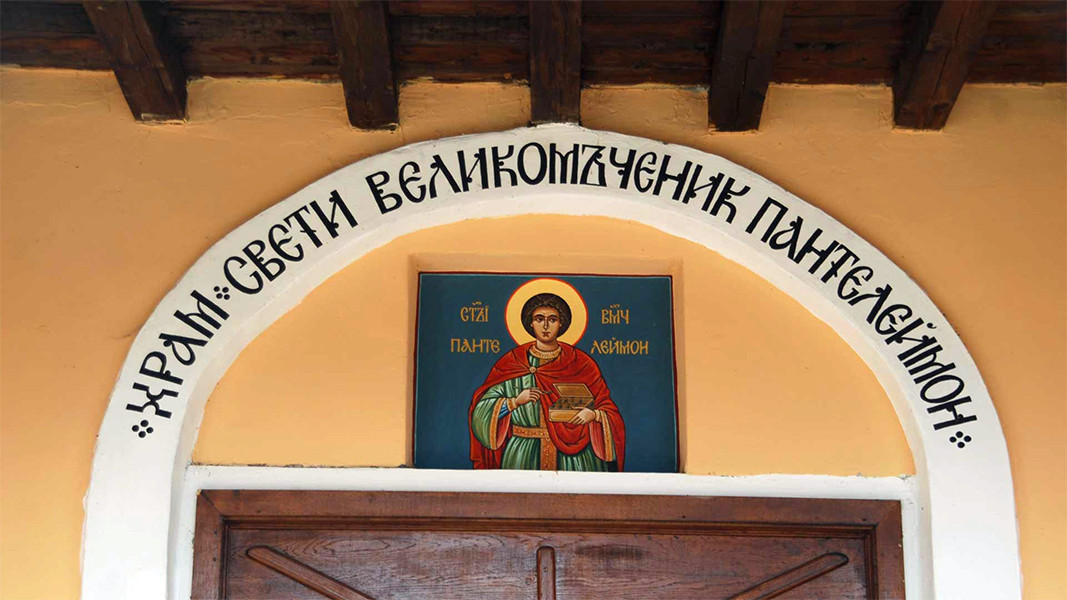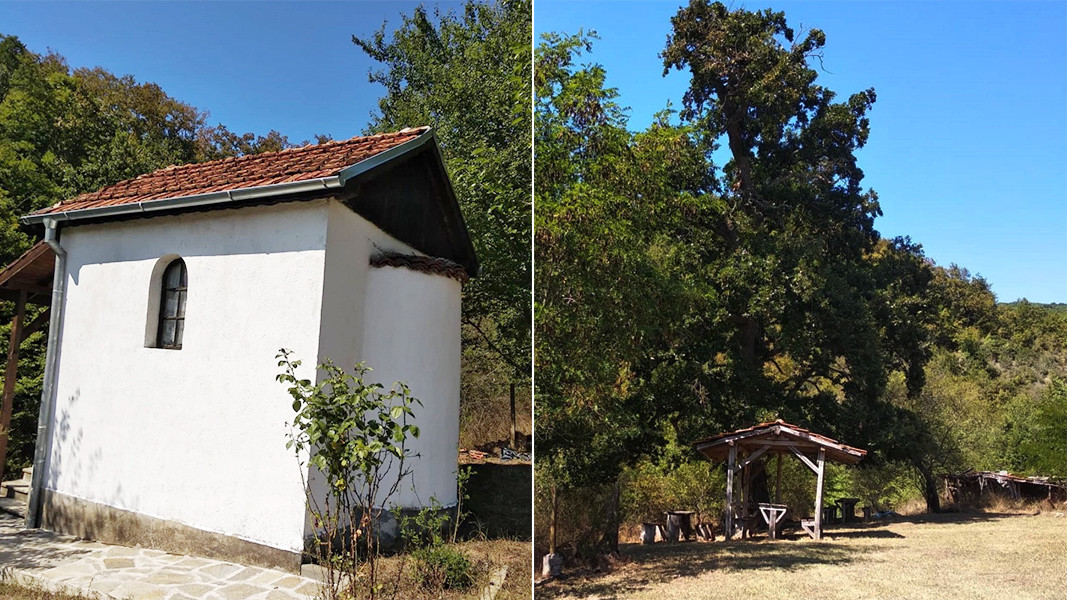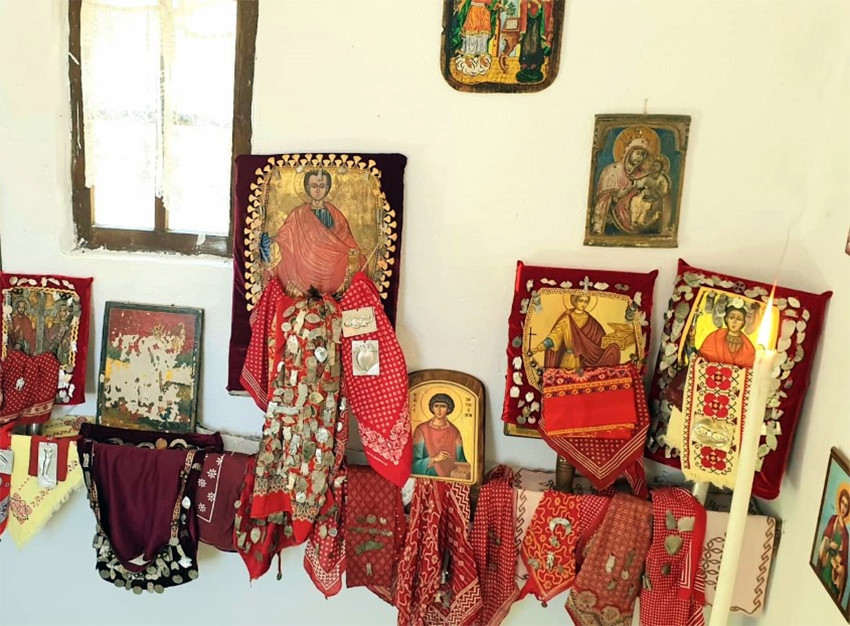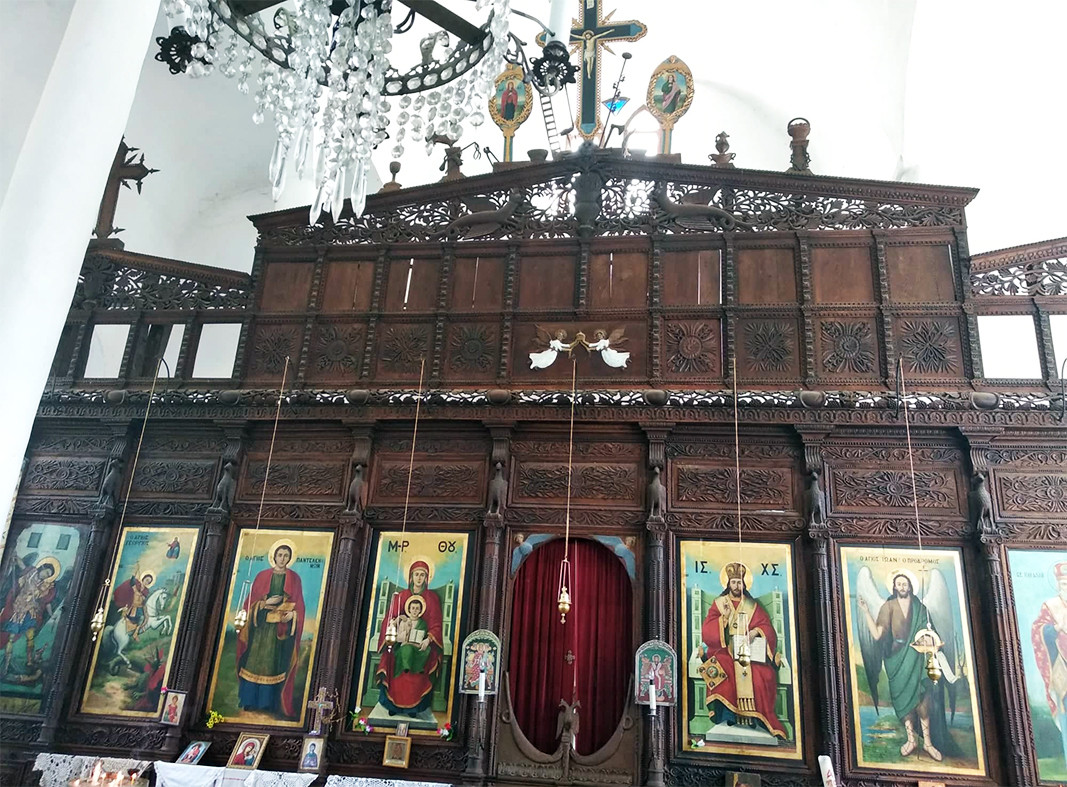In the church calendar July 27 is reserved for the veneration of the "Sveti Sedmochislenitsi" ("The seven saints") - Saint Cyril and Methodius who created the Glagolitic script, and their five students Kliment, Naum, Gorazd, Sava and Angelariy. Although each one of them has a separate holy day, today we traditionally show our gratitude to their common work.
On July 27 the Bulgarian Orthodox Church honors the memory of Greatmartyr St. Panteleimon, the "all-compassionate" healer, protector of travelers, master of summer storms, torrents and floods.

He is patron saint of many Bulgarian churches and monasteries, hospitals, medical centers, etc. These include the temple in the Nestinar village of Brodilovo, which is located on the territory of Strandzha Nature Park.
Until 1914, the population consisted of Greeks, but most of them emigrated after the Second Balkan War, and Bulgarian refugees from Eastern Thrace settled in Brodilovo. It turns out that St. Panteleimon was the most reveredsaint by the Nestinar community in the Strandzha village.

ˮIn Brodilovo the church bears the name of St. Panteleimon, so on the morning of July 27 a holy mass is celebrated - says Georgi Iliev, a member of the Church Board. After the liturgy, part of the community heads to the chapel of St. Panteleimon's outside the village, right next to a holy spring (ayazmо). By the ayazmo the villagers boil kurban soup and give it away to wish people good health. St. Panteleimon is the most revered saint by the Nestinari in Brodilovo and so the village's biggest holiday is in his honour. In the old style, the feast is on August 9 and that is when the village festival is held.
We then always make a procession with the icons up to the chapel. It is an interesting fact that in the villages of Madzhura and Pirdopolu (today on the territory of the Republic of Turkey), from which the people of Brodilovo came, both churches were named after St. Panteleimon. On the other hand, the Greeks who lived in Brodilovo also venerated him as a great saint."

The procession Georgi tells us about, then performs traditional Nestinar rites. The icons they carry are put to ˮrestˮ in the chapel, where there is a special place designated for this. Afterwards, they are ritually washed at the holly spring, cleansed with incense smoke and left in the chapel again. The Nestinar icons have handles at the bottom and are held by the Nestinars when they do their barefoot trance-like dance on burning embers. It is little known the Nestinar dance, apart from June 3, the day of St. St. Constantine and Helena, was performed on St. Panteleimon's day as well. Although this has not happened in the last few years. ˮWhen we feel inspired, we will do it againˮ, says Georgi, and goes on to talk about the church, the construction of which began in 1910.

За нестинарството - разказ от първо лице
A year later the church was consecrated and in 1913 the first Bulgarian school was founded in a building behind the temple. It is a three-aisled pseudo-basilica, with an apse, an external narthex and a wooden belfry.

A local Greek woodcarver began making the beautiful wooden iconostasis at the end of the 19th century. According to legend, the work lasted 20 years, but eventually the carver went blind shortly before it was finished, so his work was continued by his apprentices. Georgi Iliev notes that this is the second largest village church in Strandzha, only the church in the village of Kosty is bigger.

Every spring and autumn, he says, a thorough cleaning of the churches in Brodilovo and Kosti is carried out, with the help of the Thracian Society in the town Tsarevo - a society Georgi himself founded. The icons have been restored for the first time 20 years ago. Since then, the municipality has twice organized the restoration of the the aged icons.
ˮThe church is truly exceptional, not only in terms of its energy - it houses the largest collection of Nestinar icons, the oldest one is dating back to the 16th century.
Many icons were taken and preserved by the emigrants in Greece, but the collection there is not as rich. After 1956 people in Brodilovo started to demolish the Greek houses and build new ones. To preserve the icons they found there, people brought them to the church. The biggest ones - five or six of them - are of St. Panteleimon. There are several smaller ones of Sts. Constantine and Helena, which shows that St. Panteleimon was the most venerated saint."
English version: Elizabeth Radkova
Photos: Albena Bezovska, private library - Georgi Iliev, tsarevo.info, archive13 ancient graves were discovered during archaeological excavations conducted on the premises of the National Academy of Art in Sofia. The excavation is led by archaeologist Elena Nikolova from the Regional History Museum. The excavations began on..
Trapezitsa is one of the three hills for which the old Bulgarian capital, Tarnovgrad (the medieval name of today’s Veliko Tarnovo), is famous . Located to the northwest of the town, it stands across from the neighboring hill Tsarevets – the..
On the feast of the Dormition of Saint Ivan Rilski, the Bulgarian Patriarch and Metropolitan of Sofia Daniil led the Divine Liturgy at the Rila Monastery. On the eve of the feast, he bowed before the relics of the patron saint of the Bulgarian people..
On 19 October 2025, the day on which Orthodox Bulgarians commemorate St Ivan Rilski the Miracle-Worker, the newly renovated St Ivan Rilski Church in Chicago..

+359 2 9336 661
